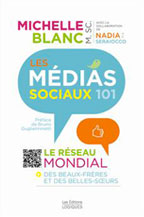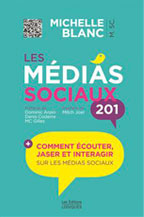La publicité dans les jeux, une thèse maintenant disponible
Ilya Vedrashko, viens de soumettre une thèse de maîtrise en étude comparative des médias au MIT sur la publicité dans les jeux informatiques, Advertising in computer games (PDF). Ma nouvelle fascination pour la publicité et le Web de demain, est une fois de plus renforcée par cette thèse que je n’ai pas encore eu le temps de lire au complet. Cependant, pour les sceptiques qui doutent encore de la puissance de ce nouveau médium, voici un extrait qui devrait vous allumer :
Games are also a great natural sandbox to try new product and marketing ideas. With many worlds now featuring commercial infrastructures for exchanging goods and money, however fictional, the advertisers can test their campaigns against the ultimate benchmark (…) paid transactions. Launch a campaign for a fictional product through in-game billboards, put this fictional product on the play shelves, and watch the fictional cash register ringing. American Apparel is doing just that: the company has opened a store in the world of Second Life where for a dollar it sells avatar outfits that are modeled after their real-world merchandise. They are now planning an event where for every item bought in the game the player will receive a discount on the real-world counterpart.
If you are interested in social networking, emergent behavior, the hive mind, smart mobs or viral distribution of information, the massively multiplayer games such as World of Warcraft, Second Life, Everquest, Guild Wars and many others provide a real-time bird’s eye view of social dynamics and an opportunity to test your assumptions one variable at a time. Start a meme and time how long it will take to propagate to a certain point while observing the path it follows to identify opinion leaders and social clusters. Give players tools to construct a store and then watch how they arrange the shelves. Even watching players design their own avatars offers rich insights into their self-perception, dreams and beliefs. Marketing anthropologists have been just handed a very valuable tool whose potential they are yet to discover.
Finally, treat your game experiments not as a marketing expense but as an R&D investment. Many media are already incorporating game-like elements either in the type of content they offer or the way they structure interactive experiences. Google is offering free access to its 3-D modeling software and now everyone with a computer and an Internet access can upload models of buildings and objects into its Google Earth application that already begins to look like Second Life. Some observers of the game space are cautiously saying that games offer a glimpse of what the next iteration of web is likely to become — even more social than now because of the real-time nature of interactions, three-dimensional, and mediated through avatars. If their predictions turn out correct, then by experimenting with games today you will acquire skills necessary to respond to the inevitable changes in the future.
The bottom line is that there is very little to lose today by investing some time and resources into exploring the game worlds. In-game advertising today is still mostly play, which means the mistakes are forgiven, the costs are low, and the fun factor is indisputable.
Article publié le lundi, 11 septembre 2006 sous les rubriques Etudes en commerce électroniques, Marketing 2.0, Marketing des univers virtuels, Marketing Internet, Médias sociaux, Medias et Internet, Relations publiques Internet et Second Life.












